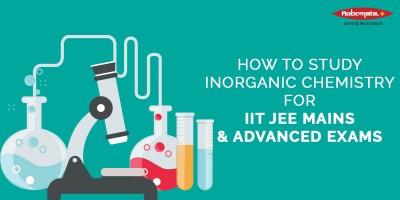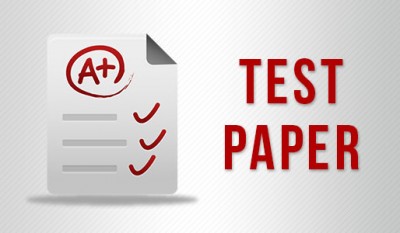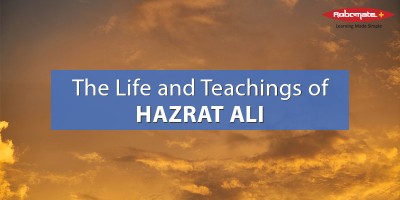State Board Commerce (XI-XII) - Test Papers
How to Study Inorganic Chemistry for IIT JEE Mains & Advanced Exams
Question:
How do you study inorganic chemistry?
And is there any secret technique or ways to be good at it?
How many times do you recommend, we should revise NCERT at this stage?
Ashish Waikar AIR 7 (IIT JEE Advanced 2017)
You have to revise. One book which you should study is NCERT. You must rote memorize it. Mainly that’s the only book. For a few chapters we follow J. D. Lee for Metallurgy and Qualitative Analysis. So for those two chapters, I rote memorized J. D. Lee. The rest of the things are covered well in NCERT, you just have to keep revising that.
One thing that helped me was that when there were two weeks left for the exam and some small things are still left from organic and inorganic chemistry which does not get memorized. I wrote those down in a note book and it turned 10-12 pages. In the last 2-3 days I revised only those for chemistry since I was confident about the rest.
Shubham Goel, AIR 6 (IIT JEE Advanced 2014)
To study inorganic chemistry I read NCERT once and I made my own inorganic notes. I would revise a part of it every day in the morning when I would get up. I had fixed half an hour of my time for revision of my notes. During the Last 3-4 months of my preparation, the moment I would get up and be done with my daily chores, I would sit and revise my notes.
Anand Prakash, IIT Roorkee
To study inorganic chemistry you should focus on NCERT. And if along with it you are solving any objective. It helps you to understand where you are committing mistakes. Go back to NCERT and look back for those portions in which you are committing mistakes. It will help you remember for a longer period of time. Because mostly we forget things in inorganic chemistry. To make sure, that we remember forever is through objective questions. Read a portion, do an objective, see where you are committing mistake. Go back and find the same answer in NCERT. And most of the questions are there in NCERT. Except for the two chapters Ashish mentioned.
Sarvesh Mehtani, AIR 1 (IIT JEE Advanced 2017) Additional input
When we give tests in the last 2-3 months, we get to learn a lot of new things for example a reaction which is not there in NCERT. To memorize that, it is better to make a separate register especially for chemistry. If you find a new question, you should note it down in the register and revise that register regularly. In my case, I made a two hundred page register.
How important are NCERT Books in IIT JEE Main & Advanced preparation?
How important are NCERT books in the preparation for JEE? JEE Main & Advanced
Shubham Goel, AIR 6 (IIT JEE Advanced 2014)
I feel that the NCERT books are good, but whether they are relevant for JEE Advanced depends upon the subject we are looking at. So for chemistry in general – including inorganic chemistry, I think the NCERT books are really wonderful. Initially I used to think that NCERT books are not nice, but one day one of my chemistry teachers, an inorganic chemistry teacher showed me the NCERT book for inorganic chemistry. I think it was a chapter on p block. He also showed me an IIT JEE paper and I think it was just 2-3 years old. And like there was a direct correlation between the content in the book and what was asked in the paper. By direct correlation I mean that an entire passage had just been picked up from the book and put in the paper with a few words and lines omitted.
So NCERT’s are extremely important. Because, they not only cover everything, but they are also very concise and dense. So for a person running short on time and wants to cover anything without reading a whole ton of books. I think NCERT is perfect to go for especially for chemistry, and not Math and Physics.
How to Study Inorganic Chemistry for IIT JEE Main Advanced Exams – Sarvesh Mehtani, AIR 1
NTSE Stage 2 Sample Papers 2018
Buy NTSE STAGE 2 MOCK TEST NOW
We are offering Free NTSE sample papers in pdf format for NTSE aspirant’s better preparation for target exam. Here we have uploaded NTSE stage 2 (SAT, MAT, LCT) sample papers, prepared by the subject experts.
Robomate+ brings here NTSE 2018 sample papers for the candidates, so that they can be helped in their preparation and finally crack it successfully. Scroll below to download sample papers and basis that prepare for the exam.
Features of NTSE Sample Paper 2018-
Going through the NTSE 2018 Sample Papers, the aspirants get an insight about the NTSE aptitude test questions, scores and pattern. Solving the sample papers on regular basis, makes aspirants more accurate with their answers and they obtain better grip on time management. With this, they gather a lot of confidence before entering the exam venue.
The NTSE candidates must check the NTSE 2018 Sample Papers and practice with them regularly as an important aspect of their preparation strategy for the scholarship exam. The aspirants can download the NTSE Sample Papers 2018 by clicking on the link provided below and switch their preparation to right track.
NTSE Stage 2 Sample Papers 2018
Buy NTSE STAGE 2 MOCK TEST NOW
We are offering Free NTSE Mock Test Papers for NTSE aspirant’s better preparation for target exam. Here we have uploaded NTSE stage 2 sample papers, prepared by the subject experts.
Robomate+ brings here NTSE 2018 sample papers for the candidates, so that they can be helped in their preparation and finally crack it successfully. Scroll below to download sample papers and basis that prepare for the exam.
Features of NTSE Sample Paper 2018-
Going through the NTSE 2018 Sample Papers, the aspirants get an insight about the NTSE aptitude test questions, scores and pattern. Solving the sample papers on regular basis, makes aspirants more accurate with their answers and they obtain better grip on time management. With this, they gather a lot of confidence before entering the exam venue.
The NTSE candidates must check the NTSE 2018 Sample Papers and practice with them regularly as an important aspect of their preparation strategy for the scholarship exam. The aspirants can download the NTSE Sample Papers 2018 by clicking on the link provided below and switch their preparation to right track.
Good Friday and Easter
Good Friday is considered as the most solemn day in the Christian calendar. On this day Jesus Christ was crucified. The date of Good Friday varies every year but usually, it occurs between 20th March and 23rd April. Good Friday is the last Friday before Easter Sunday. It is considered the pinnacle of Holy Week. Christians from all over the world celebrate this day with great humility and reverence. Easter Sunday is the end of Holy Week in which Christians commemorate the crucifixion, death, and resurrection of Jesus. As the date of Easter Sunday changes every year, the dates of many other Christian festivals are fixed with the reference of Easter Sunday. During the Holy Week churches are filled with flowers, hymns, and songs.
The Story of Good Friday and Easter
On Good Friday Jesus was executed by crucifixion after incredible torture, After his death, the body of Jesus was taken down and kept in a cave. On the opening of the cave, a giant millstone was set so that nobody could steal the body of Jesus Christ. The religious leaders were worried that the body of Jesus might be stolen so they kept Roman guards posted in front of the tomb.
On the third day, Jesus Christ was resurrected. This day was Sunday and is celebrated as Easter Sunday.
Good Friday is celebrated in the church at 3 O’clock in the afternoon because it is believed that Jesus died around three o’clock. On Good Friday, Jesus’ sacrifice is remembered. On this day people wear black clothes and go to church and candles are not burnt. All Christians dedicate this day to Jesus and remember Jesus Christ in their own ways, some pray, some read God’s books.
The Life and Teachings of Hazrat Ali
Hazrat Ali’s name is imprinted in the history of the world as one of the most noble and wise rulers. He taught people to be gentle to each other and spread peace and love all around. People are often happy degrading and humiliating others. Hazrat Ali use to speak even to his enemies with respect and humility. You can find Hazrat Ali quotes in United Nations 2002 on Arab Human Development report, highlighting the need to respect and do justice. He used to convey his teachings by action not words. He used to say teaching and educating himself is the first step, before teach and educate your fellow mates.
Hazrat Ali is related to Muhammad, the prophet of Islam as cousin and husband of his daughter. Ali is ideal for both Sunni and Shia Muslims. He is the 4th caliph and was the ruler from 656 to 661.
Human Rights taught by Hazrat Ali
During the time of his caliphate, human rights were given the highest value. They were right to live, freedom of expression, right to equality (among races) and freedom of action.
Loyalty taught by Hazrat Ali
Hazrat Ali was very loyal to Prophet Muhammad, at a time when all were disbelievers. He said “Blessings are for the man, who earns by honest means, gives money in the Name of Allah, who can have good control over tongue and doesn’t oppress others, doesn’t add new clauses in Islam and has noble character.
Knowledge and Wisdom of Hazrat Ali
Hazrat Ali was possessor of immense knowledge and wisdom. People used to approach him for guidance and knowledge. He is considered as the successor to Prophet Muhammad by Shia Muslims. In his last teaching he said “be punctual for your prayer and fear Allah. Prayer is the pillar of Islam. So before you engage yourself in any daily activities, make sure you offer your prayer. Even during the Battle of Siffin, he offered prayers between two rows of fighters with arrows flying by around him. Even after prayers he used to do additional supplications. This proves his strong believe and surrender to the Almighty in all situations.
One of his most popular quotes is “Life has two days, one which is in favor of you, during this time don’t be arrogant and one against you, be patient, this is your testing phase.”















